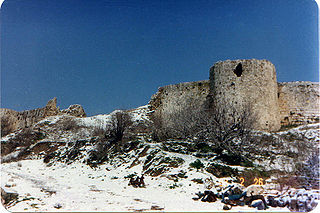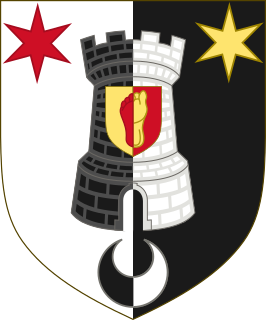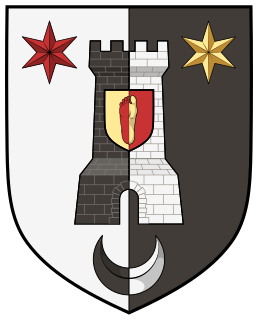 W
WThe Abaza family, is an Egyptian family of Circassian origin that has had an influence in the late 18th century to modern times. They are believed to have a net worth of over 800 million dollars US.
 W
WThe Apor family is a family of ancient Hungarian nobility, which played a major role in Transylvanian history. It has several branches, which held different ranks over the years, including primor , and the Westernised titles of báró (baron) and gróf (count).
 W
WThe Ashurbeyovs or Ashurbeylis are an Azerbaijani noble family, with an extensive history and bloodline.
 W
WAthanase Charles Marie Charette de La Contrie was a French royalist military commander.
 W
WThe House of the Bourbon di Sorbello marquises is a noble family originating in the early Middle Ages, the holder until 1819 of the imperial fief of Sorbello, entering among the ranks of the oligarchy of the city of Perugia in the 18th century.
 W
WBussche is the name of an old East-Westphalian noble family. The Lords von dem Bussche belonged to the nobility in the County of Ravensberg. Various branches of the family exist today.
 W
WThe Castellini Baldissera are an Italian family originating from Milan and Brescia.
 W
WThe de Piro family is a Maltese noble family, of Italian origins which settled in Malta with the Order of St John in 1530.
 W
WThe House of El Douaihy, is an important Lebanese and Levantine noble family of French origins of which can be traced up until the 7th century. The first prominent feudal northern Lebanese Maronite Sheikhs (Lords) to have governed Zgharta and Ehden, in northern Lebanon came from the Douaihy clan.
 W
WDouglas-Hamilton is the family surname of the Dukes of Hamilton and Earls of Selkirk. The name originates from the marriage of Anne Hamilton, 3rd Duchess of Hamilton to William Douglas, 1st Earl of Selkirk in 1656. Anne was Duchess in her own right and head of the "House of Hamilton". William was a younger son of the Marquess of Douglas.
 W
WThe House of Egmond or Egmont is named after the Dutch town of Egmond, province of North Holland, and played an important role in the Netherlands during the Middle Ages.
 W
WEl-Assaad or Al As'ad is a feudal political family/clan originally from Najd and a main branch of the anza tribe. Unrelated to Syrian or Palestinian Al-Assads, El-Assaad dynasty that ruled most of South Lebanon for three centuries and whose lineage defended fellow denizens of history’s Jabal Amel principality – today southern Lebanon – for 36 generations, Balqa in Jordan, Nablus in Palestine, and Homs in Syria governed by Ottoman rule between generations throughout the Arab caliphate by Sheikh al Mashayekh Nasif Al-Nassar ibn Al-Waeli, Ottoman conquest under Shbib Pasha El Assaad, Ali Bek El Assaad ruler of Belad Bechara, Ali Nassrat Bek. Advisor of the Court and a Superior in the Ministry of Foreign affairs in the Ottoman Empire, Moustafa Nassar Bek El Assaad Supreme Court President of Lebanon and colonial French administration by Hassib Bek—also supreme court Judge and grand speaker at halls across the Levant. El-Assaads are considered now "Bakaweit", and are considered princes or heirs to the family's dynasty to some.
 W
WThe House of Buzzaccarini is a Patavian family that had a notable role in the history of the Republic of Venice.
 W
WThe Koskull family is a wealthy aristocratic family of Livonian origins, famous for their extensive lands and manors. The family are descendants of the first King of Livonia and officially established as Koskele in 1302 in Livonia. The family spread to Estonia, Courland and Poland throughout the 15th century, Sweden and Finland in the 17th century, and Prussia and Russia in the 18th century. Several branches of the family still exist today, and is believed to be related to the von der Pahlen family.
 W
WThe House of Traba, sometimes called the Fróilaz-Traba, was a Galician noble family of the high Middle Ages. The family can be traced back to the eleventh century. They are associated with a castle named Traba, probably in the county of Bergantiños, and also with the county of Trastámara.
 W
WHuwiler Tower is the smallest of the four outer town wall towers in the city of Zug (Switzerland). Its exact age is unknown, but cannot be later than 1524/25. The tower was known for a long time as the "Hof" tower, and was called that until it was acquired by a citizen named Huwiler in 1697. Huwiler tower was part of the defense system and the city wall, but as Zug was actually never under siege.
 W
WHuwyler is a surname originating from Upper Swabia in the Middle Ages, connecting the region between the current Bavaria and Swiss-German cantons. This surname is still recognized as linked to the Swiss central region with roots in the cities of Risch and Steinhausen.
 W
WKönigswarter is a Jewish Austrian-Hungarian noble family originating from Königswart, Bohemia. In the middle of the eighteenth century, their ancestor Jonas Hirsch Königswarter emigrated to Fürth, Bavaria, where he established a business that made him wealthy. At his death (1805) he left five sons, who founded banking houses successively in Frankfurt, Vienna, Amsterdam, and Hamburg.
 W
WPalazzo Capponi Stampa, also known as Palazzo Orsini Capponi Stampa Pediconi, is a 17th-century palace in Rome. It sits between Via dei Banchi Nuovi and Via di Panico, overlooking the Piazza dell'Orologio.
 W
WThe Pipenpoy family (/pɪpɒ̃pwə/), was an old and influential patrician family of Brussels which exercised public functions in the capital of the Duchy of Brabant until the end of the Ancien Régime. It died in 1832 with Catherine de Pipenpoy, who was 100 years old. Several of its members were admitted to the Seven Noble Houses of Brussels.
 W
WPranckh is the name of an ancient Austrian noble family, descending from Pranckh Castle, near Sankt Marein bei Knittelfeld in the former March and later Duchy of Styria. The family's origins date back to the year 1135, when Wolfkerus de Branka attested a charter regarding an endowment to Admont Abbey, thus making it one of the oldest families in Austria still present today. In addition to the Styrian mainline, other branches existed in Salzburg, Carinthia, Lower Austria and Bavaria. In later parts of history, the family rose from Knights to Reichsfreiherren (Barons of the Holy Roman Empire) and Reichsgrafen (Imperial Counts of the Holy Roman Empire). Many of their names can be found in high court and state offices of the Archbishopric of Salzburg. Branches of the family exist to this day in Austria, Germany, France and the United States.
 W
WThe House of the Saboulin Bollena is one of the oldest French aristocratic families, from the old feudal nobility of Provence.
 W
WThe Salamon family - sometimes Salomon or Salomoni - was a noble patrician Venetian family of ancient but uncertain origin, counted among the so-called “Case Vecchie” of the Republic of Venice.
 W
WSkancke is a Norwegian family name with some slightly different spellings as Skanke, Schanke, Schanche and others. It is not proved whether all persons with those names descend from the same family line in the Middle Ages. One famous Skancke family is from the 17th Century situated in the old mining town of Røros in Mid-Norway.
 W
WTimroth, also Tiemroth, Thiemeroth, Thimroth and Timrod, is a noble family of the Netherlands, Livonia, Courland, Russia and Finland from Thuringia.
 W
WTyndall is the name of an English family taken from the land they held as tenants in chief of the Kings of England and Scotland in the 11th, 12th and 13th centuries: Tynedale, or the valley of the Tyne, in Northumberland. With origins in the ancient Anglo Saxon nobility of Northumbria, the Royal Scottish House of Dunkeld and the Anglo-Norman nobility, they have contributed courtiers, judges, writers, historians, sailors, airmen, scientists and philosophers to the history of England, Ireland and the new world. Two members of the family were offered, and declined, the throne of Bohemia in the 15th century and one of their number, William Tyndale, was the first modern translator of the Bible into English and one of the most important figures in the evolution of the modern language. The family is spread today throughout the British Isles and the English speaking world.
 W
WUmaill was a territory located in the west of what is now County Mayo, Ireland. It comprises the baronies of Burrishoole and Murrisk, essentially all the land adjacent to Clew Bay.
 W
WThe Van Cotthem family was an old patrician family of Brussels which exercised public functions in the capital of the Duchy of Brabant. Several of its members were aldermen of Brussels, and several were admitted to the Seven Noble Houses of Brussels. The family belonged to the House of Sweerts, the second of the Seven Noble Houses of Brussels.
 W
WThe Van Dievoet family is a Belgian family originating from the Duchy of Brabant. It descends from the Seven Noble Houses of Brussels and its members have been bourgeois (burgess) of that city since the 1600s. It formed, at the end of the 17th century, a now extinct noble Parisian branch which used the name Vandive.
 W
WThe Vanderbilt family is an American family of Dutch origin who gained prominence during the Gilded Age. Their success began with the shipping and railroad empires of Cornelius Vanderbilt, and the family expanded into various other areas of industry and philanthropy. Cornelius Vanderbilt's descendants went on to build grand mansions on Fifth Avenue in New York City; luxurious "summer cottages" in Newport, Rhode Island; the palatial Biltmore House in Asheville, North Carolina; and various other opulent homes.
 W
WThe Vandive family was a Parisian and elder branch of the Van Dievoet family from Brussels, descended from goldsmith Philippe Van Dievoet, the brother of famous Brussels sculptor Peter Van Dievoet. The family were first bourgeois of Paris before becoming part of the French nobility.
 W
WŻeleński is a Polish princely family and one of the most influential noble families in pre-World War II Poland. The Żeleński family's coat of arms is the Ciołek coat of arms, which is one of the oldest in medieval Poland. The Żeleński family reached notable power under the late Piast dynasty, under the Polish–Lithuanian Commonwealth, during the Partitions of Poland, and in the 20th and 21st centuries.